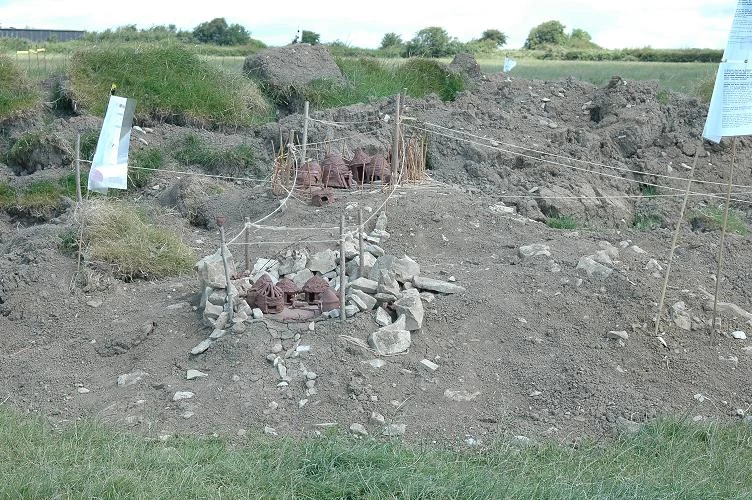Tuesday 10th July
, 10 July 2007
Contributed by CAROLINE
Today we were blessed with yet more sunshine- perhaps summer is here afterall!
Here’s an update from the trenches…
Trench 1: The largest trench
The Eastern half of trench one has been behaving itself quite well and a series of features have been revealed and their function is often evident. The majority of the features are postholes, some are shallow, while others are quite deep and have in some instances post packing intact. Some of these postholes and pits have had prehistoric pottery within them and are therefore prehistoric in date. However, not all contained dating evidence (pottery or coins etc) and so their date is unknown. It is difficult at present to determine what postholes are likely to be contemporary to each other, but hopefully when we have drawn a full plan of the trench we will see if the postholes form a pattern- rectangular, circular or otherwise. However, there are so many postholes that the pattern is so far highly confused as they seem to be from a series of structures dating from very different periods. As one person has commented, its like trying to do a puzzle without a picture. There is also quite a large curvilinear gulley which seems to have both been cut by a ditch on the one side, while the other appears to have cut an earlier ditch. While in the Western half of the trench the features are slightly more complicated. Again we seem to have two, maybe three gullies, one of which is very shallow. Two of these gullies may be at right angles to each other and one of which is cut by a later post hole. There is also a large rubble-filled ditch and another potential rubble-filled ditch about 2m away.
Trench 2: the L shaped trench
This trench is quite confusing. An extremely deep feature appears to be a natural geological hollow filled in with dumps of occupation debris from the settlement. A slot was dug down through the feature to the natural base and there appears to be a very substantial glacial fill at the base of this hollow. In one area this pit/natural hollow appears to have been cut by a later shallow pit, which was filled with a high concentration of ash and iron objects. There are also a series of postholes, but these do not seem to make up any discernable structures.
Trench 3
This trench was intended for exposing and excavating a sample of the enclosure ditch which appears to have been cut during the middle-late Iron Age. The ditch is approximately 1.3m deep and encloses a sizeable area – creating such a feature would have taken a lot of effort, manpower and time. The ditch appears to have then become naturally filled in with soil, washed or blown in from elsewhere. Then in the 2nd or 3rd century AD, it was recut, this time much shallower than before and therefore less substantial and not so impressive but again this may have formed a defensive function or possibly demonstrating the resources of the inhabitants. Alongside there was a large area of rubble which was initially believed to be the remnants of a bank( banks quite often accompany ditches), but has since proved to be otherwise. This rubble is instead derived from a series of rubble-filled features, a number of which have now been exposed. There are also 2 pit like features which are similar in character to each other. The southern most of these ditches has clearly been cut by the ditch, we can therefore say that the pit is earlier than the ditch.
